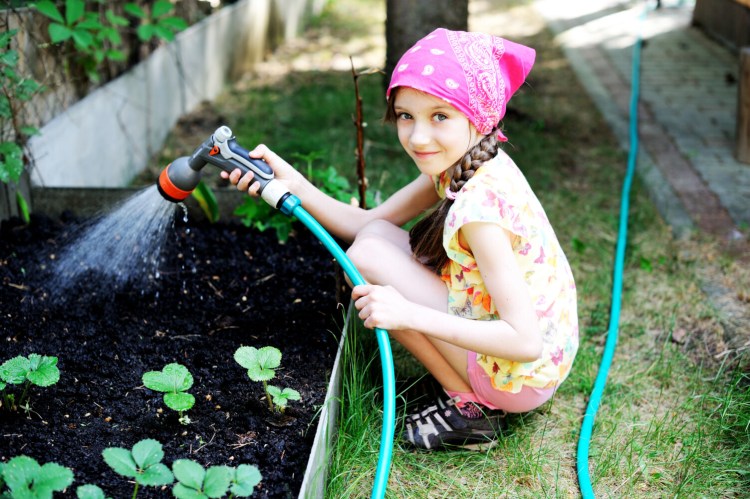Just since I wrote last week’s column, it’s a changed world. Among many, extraordinary cancellations, schools are closed, leaving youngsters – from kindergarten through high school – with days on end with no structured activities.
Parents in many cases will be unable to work, as many stores and restaurants are also closed. Those working remotely are on double-duty, needing to keep their children entertained as well as please their employers.
Children, being children, are likely to get bored, and will need some new activities to keep them entertained. Gardening offers many great ways to do just that.
Lynne Holland, a community education assistant based in Lisbon Falls for the University of Maine Cooperative Extension, said that the extension and 4-H are putting together an online program of children’s activities. It wasn’t yet ready when we spoke on the phone, but she told me some of the ideas she’d be recommending for it.
“With kids, seed-starting is a really excellent idea,” she said. “And you can do it with stuff you already have at home.”
Seeds can be planted in yogurt cups and egg cartons. You can even make small pots out of old newspapers; the extension shows you how on its website. Print readers, it’d tickle me pink if you and your kids used this very page where my column is appearing to grow a vegetable seedling. You’ll have the most success if you place the seed pots under fluorescent or grow lights, but a south-facing window will produce some seedlings.
Holland also suggested pruning, with close supervision for younger kids, of course, since sharp objects are required. You could direct the kids to cut branches that truly need pruning. But Holland recommended letting the kids cut branches for vases, such as forsythia and other spring-blooming shrubs that are able to suck up a lot of water. The normal practice is to split the bottom of the branches with a pruner, stick the branches in water and wait for blossoms. Her fun twist is to add food coloring to the water, which will produce different colored blossoms. Call it a botany experiment, one that produces something pretty as a bonus.
Building insect hotels is another excellent potential wait-out-the-virus project, and now is a good time, before the insects get active. “Again the children might need help with power tools,” Holland reminded parents.
Hotels for native bees, which are even more important as pollinators than honeybees (who originally came from Europe), mostly involve tubes or holes drilled in wood. Different bees require different diameter holes. You can find all sorts of websites with directions for creating such hotels; Holland recommended one with a Maine connection – the Earth Workers blog by Amy Witt, a former Maine Cooperative Extension agent. In addition to bees, the blog includes instructions for bug hotels aimed at beneficial beetles and other insects.
Ellen Gibson of the Maine AgrAbility program had an absolutely simple idea to keep children entertained: “Just send them on a scavenger hunt. Send them outside to see how many different kinds of insects they can find.” Once the wildflowers start blooming, flowers can substitute for insects.
She also recommended building a garden arch out of inexpensive materials such as chicken wire. Plant tall-growing peas on one side, cucumbers on the other, and by mid-summer the children will have a little garden hideout (when, fingers crossed, this pandemic will be history), as well as vegetables to eat.
Both Gibson and Holland suggested kids and parents create a garden bed together, in particular a raised bed, which is simpler because you won’t have to mess around with removing lawn, tilling and such. Also for ease, use 2-by-8 boards to make the bed, rather than beams, bricks or stones; it won’t be permanent, but it should last through this period of social distancing. Good plants for a raised bed include sunflowers, always popular with youngsters, and zucchini, because they produce so much food.
As all this talk was going on, my wife, Nancy, recalled a family story. During the late 1930s, Nancy’s aunt came down with polio, and the family was quarantined. To keep the healthy members of the family entertained, they used the time to create a perennial border along the driveway – that garden still existed when the family sold the home half a century later.
Nancy didn’t see the garden until the early 1950s, but it was a highlight of the property, with brightly blooming perennials. Some might have been purchased, others transplanted from elsewhere in the garden, and many were probably added later.
But a good thing came out of that crisis and quarantine.
We can only hope some good things come out of this one.
Tom Atwell is a freelance writer gardening in Cape Elizabeth. He can be contacted at: tomatwell@me.com.
Send questions/comments to the editors.



Success. Please wait for the page to reload. If the page does not reload within 5 seconds, please refresh the page.
Enter your email and password to access comments.
Hi, to comment on stories you must . This profile is in addition to your subscription and website login.
Already have a commenting profile? .
Invalid username/password.
Please check your email to confirm and complete your registration.
Only subscribers are eligible to post comments. Please subscribe or login first for digital access. Here’s why.
Use the form below to reset your password. When you've submitted your account email, we will send an email with a reset code.